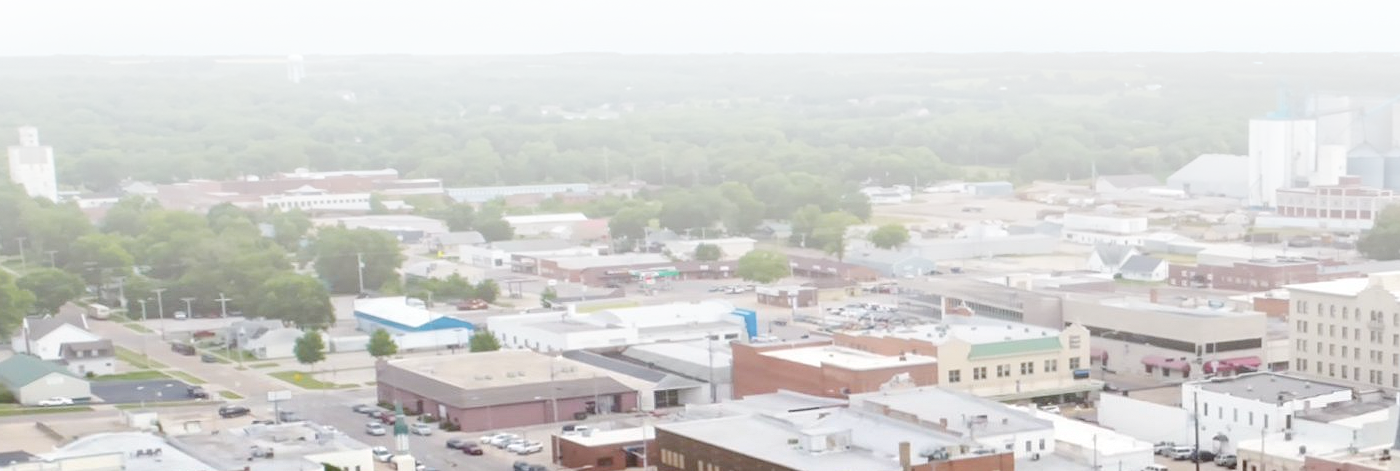Governor's Cup Wins in a Row
(Site Selection)

9 Nov 2024
Well, actually, you can spell ‘economic development’ without the letters “L,” “A,” “N,” and “D,” but proper economic development becomes extremely difficult without suitable locations - land as well as existing buildings - to attract corporations, propel small business owners or house potential workers and their families.
NGage’s mission is to sustain and grow the region’s economy and quality of life by providing leadership and resources for business retention, expansion, recruitment, and community development. The organization collaborates with key Gage County partners to acquire and market land to drive meaningful economic development.
As a result, the NGage website has a collection of buildings ready for occupancy and available land for sale in Beatrice and Gage County. Advantageous properties include the Hickory Industrial Site (260 acres), Gage County Industrial Park (80 acres), Northgate Crossing (47.42 acres), and land off Highway 77. The listing assuredly contains a property perfect for companies and entrepreneurs in target industries of advanced manufacturing, logistics/distribution, healthcare-related businesses, bioindustrial manufacturing, and agriculture-related businesses.
While ‘available land’ and ‘available buildings’ are typical keyword phrases that site selectors target, the various forms of those designations differ significantly. Understanding the most frequent types of each and associated terms is an essential starting point for community leaders.
A greenfield is vacant land that has never been used for development.
A brownfield is an abandoned or underused industrial and commercial facility hampered by environmental contamination. The U.S. Environmental Protection Agency defines a brownfield site as a property that contains or may contain a hazardous substance, pollutant or contaminant, complicating efforts to expand, redevelop or reuse it.
“Shovel-ready” refers to sites that can quickly facilitate the development process for interested businesses. The Minnesota Department of Employment and Economic Development defines “Shovel-ready” as commercial and industrial sites that have had the planning, zoning, surveys, title work, environmental studies, soil analysis and public infrastructure engineering completed before putting the site up for sale and are under the legal control of a community or other third party. Electric Cities Georgia Economic & Community Development outlines the essential role of shovel-ready sites in economic development very well.
An Opportunity Zone is an economically distressed community eligible for special tax standing to spur investment in underserved or neglected areas.
Commercial real estate can be broadly defined as properties designed for business and professional activities, such as office buildings like high-rise corporate headquarters and coworking spaces, retail spaces like shopping malls, strip malls, standalone stores and mixed-use buildings and Industrial properties, such as warehouses, distribution centers, and manufacturing facilities.
Industrial Parks are major commercial and industrial development areas comprising real estate with ease of access to rail, highway, air or port infrastructure for companies to operate in light or heavy manufacturing, warehousing and distribution and other functions, often nearby or adjacent to populated centers.
Downtowns, often referred to collectively as Main St. America, are those areas, often in rural cities and towns, that were once the heart of each community but now have been bypassed, often literally by major highway construction, that has taken a consistent customer stream away from the unique shops and services many residents still desire.
A strong vision and managed mission to select land and property can boost growth, reduce poverty, promote economic equality and support progress in resident’s quality of life. A detailed analysis of all available options, incorporating regional infrastructure investment, housing needs, employment patterns, recreational space, and commercial activities, is critical to understanding how and when to utilize land and properties to provide locations where businesses can be successful.
While forecasting can be difficult, strategizing for future impacts is vital to that analysis. Land appreciation will occur as housing demand occurs, while the potential for increased income generation can deliver either positive or negative returns for land and property owners in residential, commercial and recreational markets. Considering changes or updates to zoning, permitting and regulatory requirements, along with determining existing or potential environmental issues, can limit possible land and property ownership hazards.
Growth begets further growth, however, so procuring more land and buildings is essential to maintaining momentum. Securing the rights to land and property will foster the abilities of an EDO to pursue business attraction, retention and expansion initiatives because confidence will grow in various manners regarding future investments. Whether through Opportunity Zone designation or not, such sites can support growth through prosperous business facilitation and reduce a community’s blight, decreased property values, or lost economic opportunities. Shovel-ready sites often offer the best infrastructure access to highways, rail, air and port options for optimum supply chain management. Developing creative uses for existing commercial real estate can provide physical spaces for businesses or be switched to residential or multi-use properties, all fostering job creation and income generation. In totality, successful management of all these potential options impacts the overall economic health of a region, leading to connoted interest by outside investors.
Whether drawn to ‘set up shop’ in existing buildings or to start from scratch at a greenfield or shovel-ready site, businesses offer their locations major benefits via increased numbers of jobs, valuable tax dollar contributions and other investment opportunities. As such, their impact on community development should not be overlooked. More businesses with more employees means more individuals and families seeking quality-of-life amenities. An ample supply and diversity in both recreation - parks, trails, green space, etc. - and cultural facets - museums, artistic venues, etc. - continue the continuous cycle of attributes aimed at enjoying life where these entities do business.
Community and government leadership, economic development agencies and investors should collaborate on strategies to manage procurement of usable locations to attract and retain business endeavors.




Governor's Cup Wins in a Row
(Site Selection)
Best States in America
(U.S. News and World Report, 2019)
Best State for Families
(WalletHub, 2020)
Best States for Veterans
(CNBC, 2020)